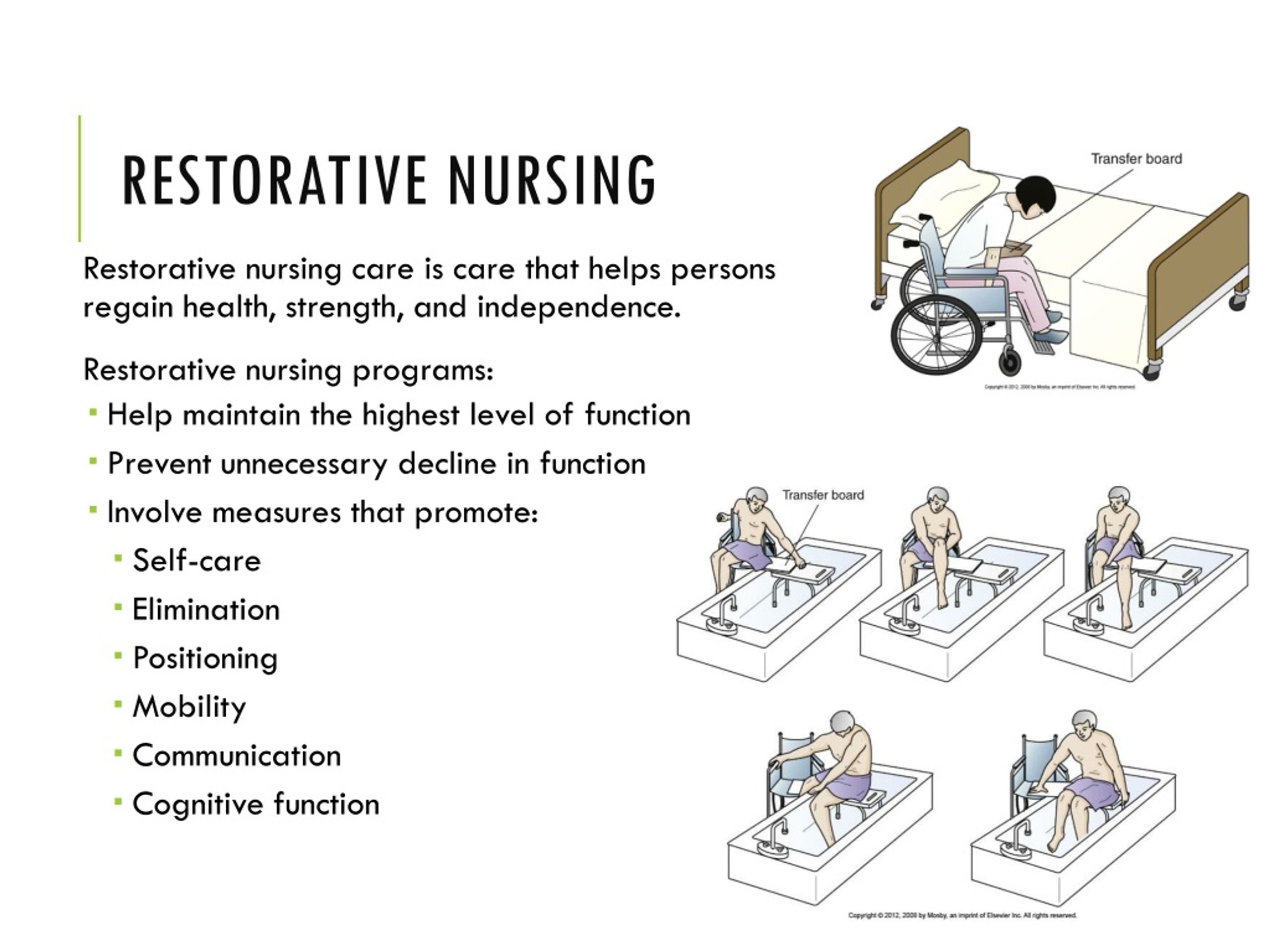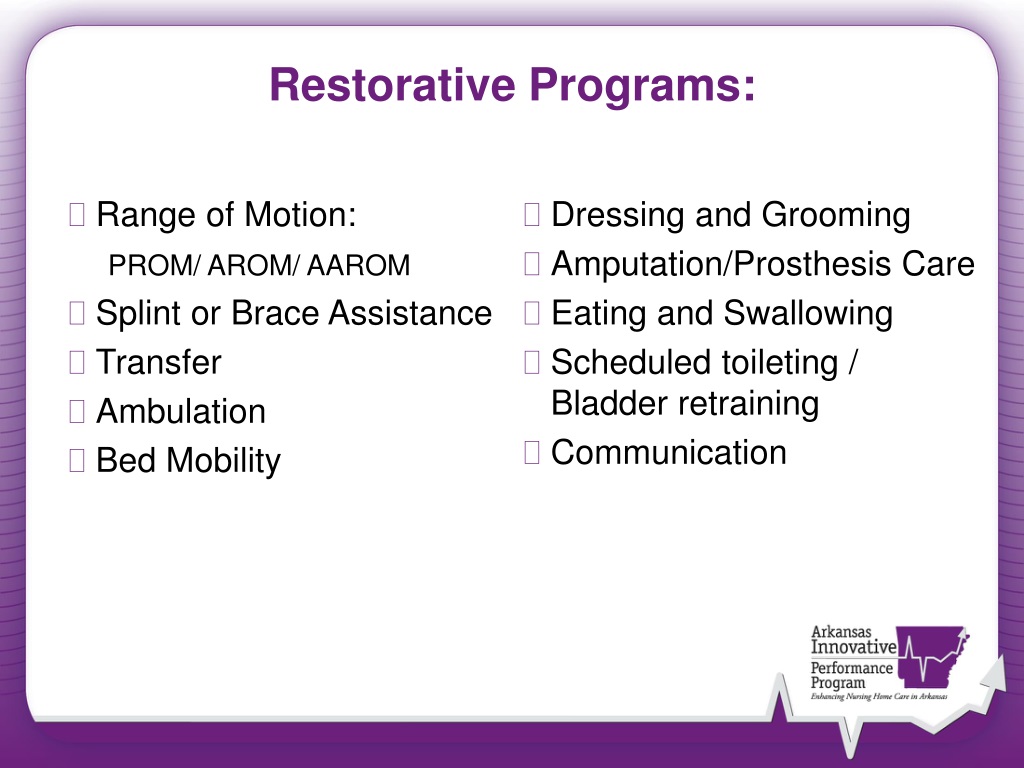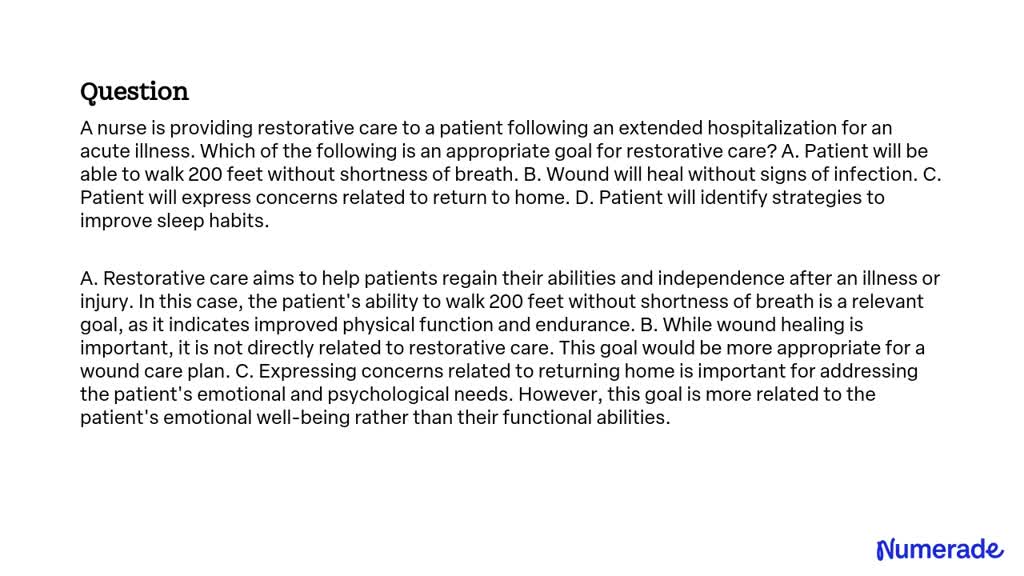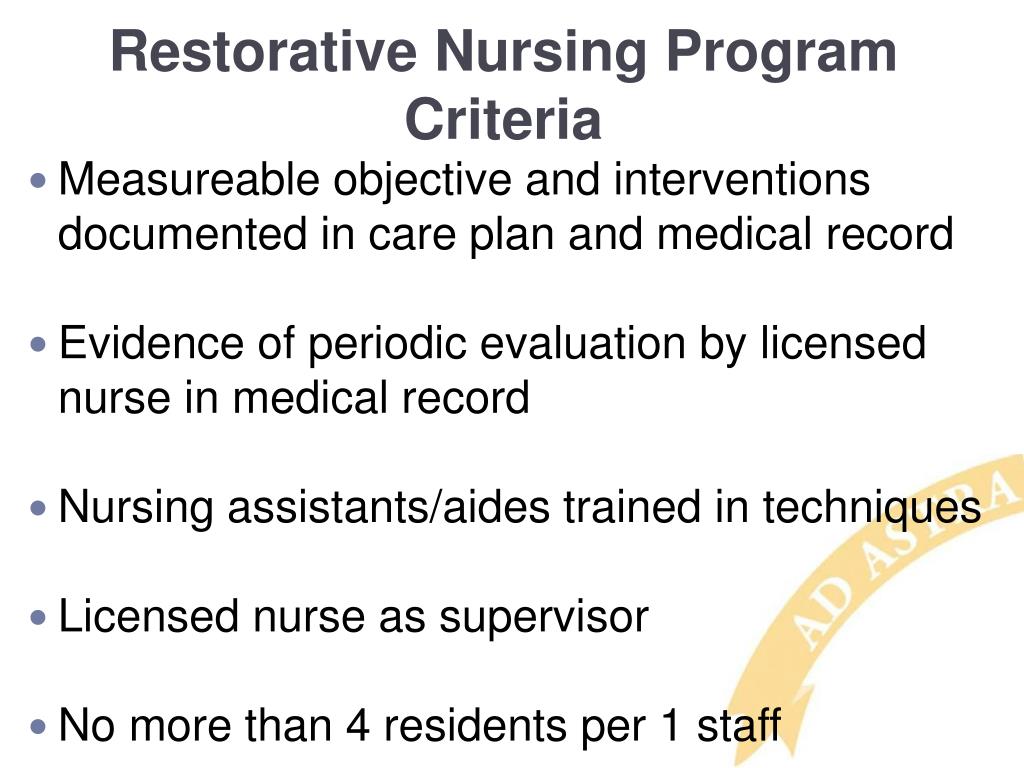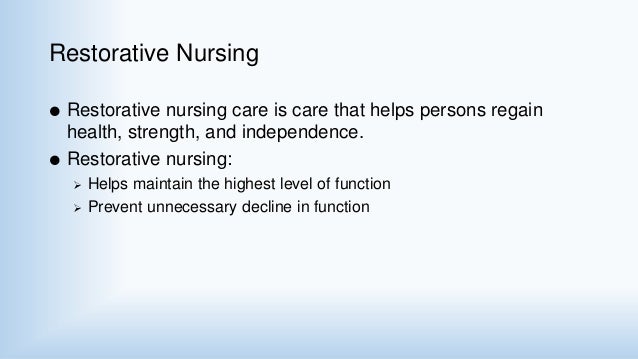Which Option Is An Appropriate Goal For Restorative Care

The afternoon sun filters through the large windows of the Willow Creek Rehabilitation Center, casting a warm glow on the activity room. Sarah, a stroke survivor, carefully reaches for a brightly colored therapy ball, her brow furrowed in concentration. Across the room, a group of seniors are engaged in a lively game of bingo, their laughter echoing through the space, a testament to the resilience of the human spirit.
This scene encapsulates the core of restorative care: helping individuals regain independence and improve their quality of life. However, determining the most *appropriate goal* for restorative care is not always straightforward. It requires a nuanced understanding of individual needs, realistic expectations, and a collaborative approach between healthcare professionals, patients, and their families.
Understanding Restorative Care
Restorative care, often confused with other forms of rehabilitation, focuses on helping individuals maintain or regain their physical, mental, and psychosocial well-being after an illness, injury, or disability.
Unlike acute rehabilitation, which aims for significant improvements in a short timeframe, restorative care is often a slower, more gradual process, emphasizing function and independence.
According to the American Medical Directors Association (AMDA), restorative care aims to maximize function and enhance the quality of life, regardless of age or diagnosis.
The Nuances of Setting Goals
Setting appropriate goals in restorative care is a delicate balancing act. It requires considering the patient's potential for recovery, their motivation, and the resources available to them.
An overly ambitious goal can lead to frustration and discouragement, while a goal that is too easily achieved might not provide sufficient motivation for progress.
Therefore, a person-centered approach is crucial. This involves actively involving the patient in the goal-setting process, understanding their priorities, and tailoring the care plan to their specific needs and desires.
"The goal of restorative care should not simply be to restore function, but to restore meaning and purpose to the individual's life." - Dr. Emily Carter, Geriatric Specialist
Different Avenues for Restorative Goals
Restorative care goals can encompass a wide range of areas, depending on the individual's needs.
Physical Function: This could include improving mobility, strength, balance, or coordination. For Sarah, the stroke survivor, her goal might be to regain the ability to dress herself independently or to walk without assistance.
Cognitive Function: Restorative care can also address cognitive impairments such as memory loss, difficulty with problem-solving, or communication challenges. Cognitive therapies and activities are designed to stimulate the brain and improve cognitive function.
Psychosocial Well-being: This aspect of restorative care focuses on addressing the emotional and social needs of the individual. It might involve providing counseling, support groups, or opportunities for social interaction. Isolation and depression are common challenges faced by individuals recovering from illness or injury, making psychosocial support crucial.
Activities of Daily Living (ADLs): A key goal in restorative care is often to improve the individual's ability to perform ADLs, such as bathing, dressing, eating, and toileting. Regaining independence in these areas can significantly improve quality of life and reduce the burden on caregivers.
The Role of the Care Team
Achieving appropriate goals in restorative care requires a collaborative effort from a multidisciplinary care team. This team may include physicians, nurses, physical therapists, occupational therapists, speech therapists, social workers, and caregivers.
Each member of the team brings their unique expertise to the table, contributing to a comprehensive assessment of the individual's needs and the development of a personalized care plan. Regular communication and collaboration among team members are essential to ensure that the care plan is effective and responsive to the individual's changing needs.
Family involvement is also crucial. Family members can provide valuable insights into the individual's history, preferences, and goals, and they can play a vital role in supporting the individual's recovery.
Realistic Expectations and Adapting to Change
While the goal of restorative care is to maximize function and independence, it is important to have realistic expectations.
Not every individual will fully recover their previous level of function, and progress may be slow and gradual. Setbacks are also common, and it is important to adapt the care plan as needed.
The focus should be on celebrating small victories and maintaining a positive attitude. It's about progress, not perfection. Even small improvements in function can have a significant impact on the individual's quality of life.
Measuring Success
How do we measure the success of restorative care?
It's not simply about achieving a specific physical or cognitive milestone. It's about the overall improvement in the individual's quality of life, their ability to participate in meaningful activities, and their sense of well-being.
Tools such as the Functional Independence Measure (FIM) can be used to track progress in ADLs, while patient-reported outcome measures can provide valuable insights into their subjective experiences and perceptions of their own health.
Looking Ahead
The field of restorative care is constantly evolving, with new research and technologies emerging to improve outcomes. The increasing emphasis on person-centered care, combined with advances in rehabilitation techniques, holds promise for helping more individuals regain their independence and live fulfilling lives.
The ultimate goal of restorative care is not just to add years to life, but to add life to years.
By focusing on individual needs, setting realistic expectations, and fostering a collaborative approach, we can empower individuals to live their lives to the fullest, regardless of their age or disability.

